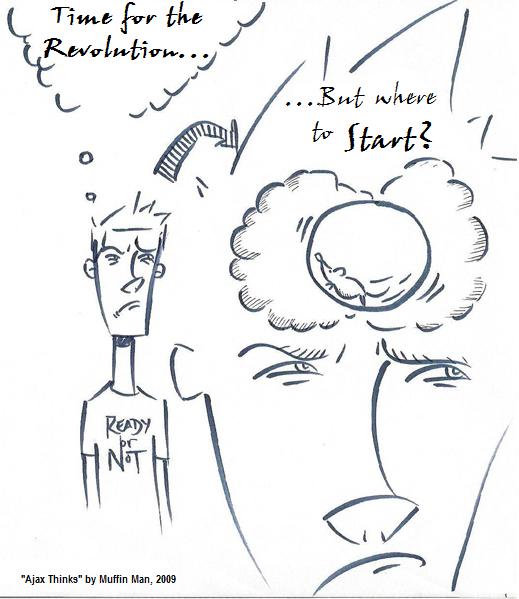It has almost been a year since I started playing with a website called Helium.com. It is an article database compiled by user submitted content. I have written a few articles for it. I enjoy writing, I'll just say that now in case you didn't know. Recently I started writing an article to submit to Helium, but didn't seem to grasp the title I was writing to before I started writing. After I was finished, or thereabouts, I realized that I was kind of off the mark. You see, Helium suggests titles and then you choose one you know something about and write the article to suit the title. Since I felt like I missed the point I decided not to post it, instead I will post it here.
I give you my unfinished essay, of sorts:
The air around us is constantly full of waves. It is a constant barrage of energy. Cell phones, radios, and other communication devices emit various frequencies from point A which are then received by like devices at point B. Some receiving devices look for all signals of their own language, or, frequency, while other receivers look for signals sent distinctly to them. Signals are sometimes lost or disrupted or blocked entirely by environmental hazards or defects in transmitter or receiver. It is an invisible chaos of communication that abounds every day.
Thoughts in the mind are similar to the various types of waves zipping around us in the air. Some thoughts have higher priority than others and command more attention. Other thoughts are attached to physical sensations and may have the ability to disrupt even the highest of priority thoughts. With constant stimuli competing for the attention of our five senses, it can be a very challenging thing to maintain control of our many thoughts.
For some people, distracting thoughts can be quite a nuisance. Invasive and unpleasant thoughts, or irrational fears and worrying, plague many people. For others, the types of thoughts that distract their attention might not be troubling per se, but they do interrupt the focus of attention and can become frustrating. Depending on the frequency, severity, and type of distracting thoughts, a person may want to find ways to deal with them. In the case of frequent, distressing thoughts, perhaps the assistance of a trained therapeutic professional, or religious leader, would be appropriate.
Distracting thoughts for most people can be dealt with using simple techniques of redirection and processing. Imagine a waterway in your mind, there are many branches from the main body of water, with varying currents throughout. All along the banks of this waterway are thought topics. You are the pilot of a boat and you choose which areas of the bank to dock your boat and attend to the topic at hand. In dealing with errant thoughts, or distractions, you must remember that you are the pilot of the waterway in your mind. You have control over your thoughts.
One process of controlling your thoughts is to use redirection. Redirection is a good tool for when a thought comes to mind that you don’t want to deal with at the moment. For example, if you were thinking about the financial report you need to complete for work, and then thoughts of the movie you saw last night distract you, try to redirect yourself by thinking of your financial report from a different angle. You redirect your focus. Remember, you are in control of what you focus on. If you need to focus on your work, but random other thoughts interfere, perhaps it is because you are bored and thinking about the focus topic from another angle might provide refreshment for your mind.
You can also redirect your thoughts by changing the distracting thought into a thought about your focus topic. Make destructive thoughts become constructive. When you are the pilot of the boat, you are at the helm, you control the direction. Sometimes a current will pull you in a direction you don’t want to go, but with the right ability you can use that divergent current to your advantage.
Distracting thoughts can also be dealt with by processing them. Some thoughts aren’t as easily pushed aside, especially ones tied to physiology. These thoughts might include cravings for addictive substances or behaviors. In these cases, sometimes it is best to recognize how you are feeling and process the thought. It is distracting to you because you do not want it, but by focusing on just not thinking about it, you are thinking about it more. You have to attend to the thought, recognize it, control your reaction to it, accept that it is there, and put it aside. In the waterway analogy, sometimes the current might be too strong to steer out of, in which case you are going where the water is taking you, but once you get there you don’t need to attend to the topic available. At the shore the current subsides and it is then that you can resume your previously intended course of travel.
Distracting thoughts range from mild to severe, from inane to distressing, and can happen at any time. Learning to control your thoughts and not let yourself become distracted will help increase your productivity and perhaps your peace of mind. Remember that every thought we attend to takes place because we generate it. If you have created the thought, you can erase it.
Date Tricks for Guys that Truly Work
5 years ago


No comments:
Post a Comment